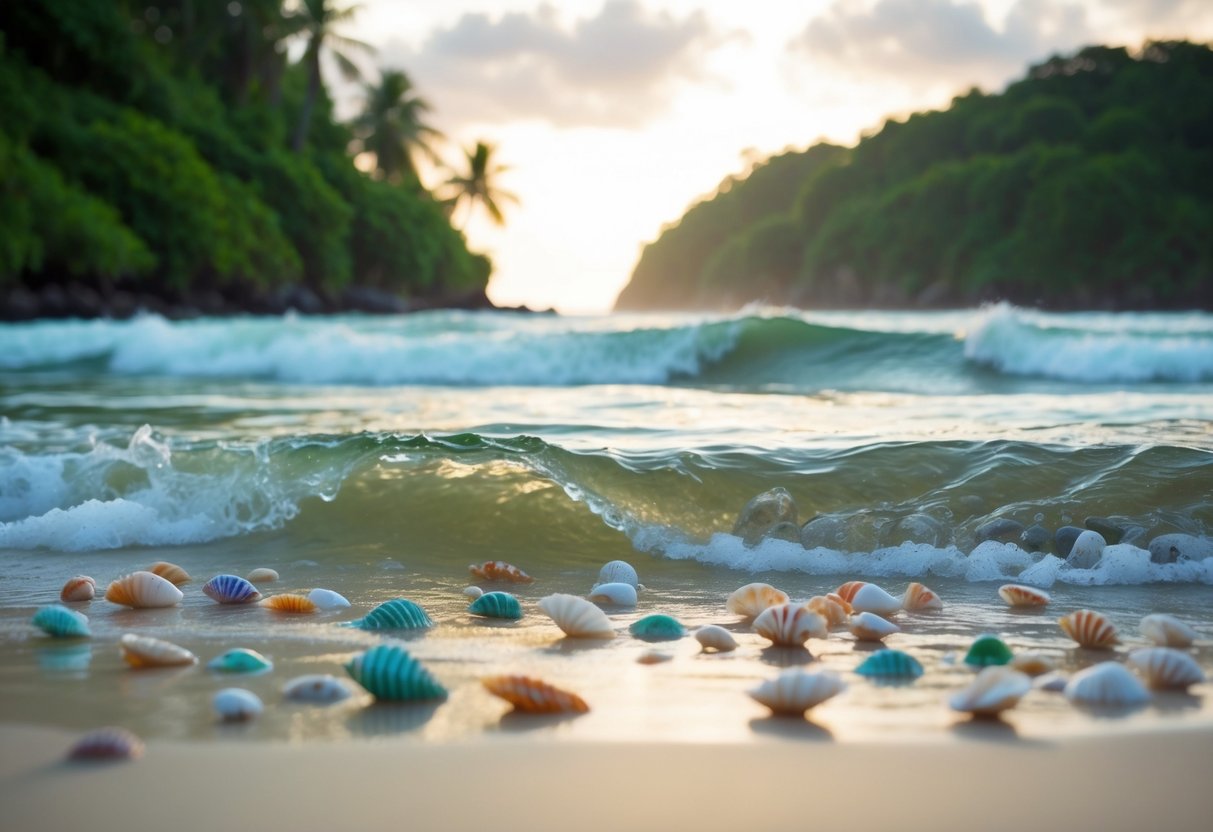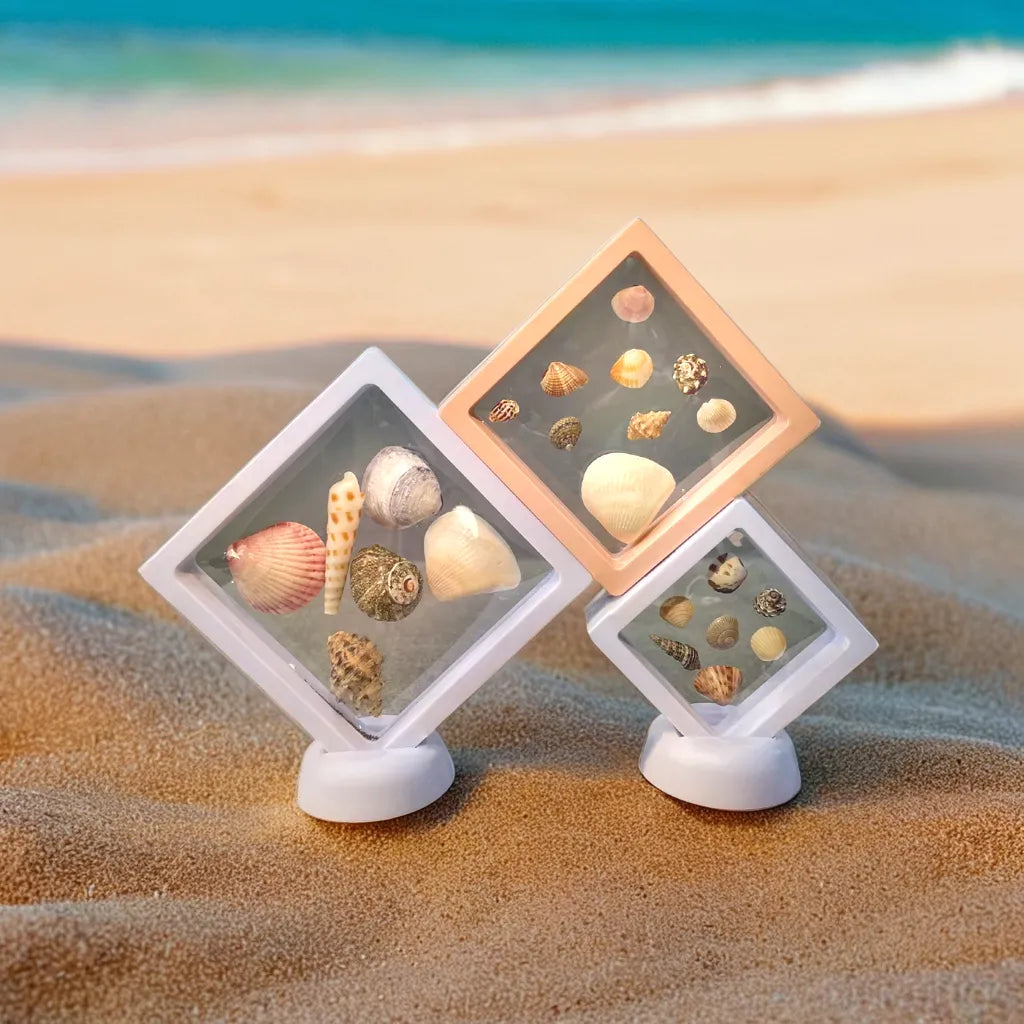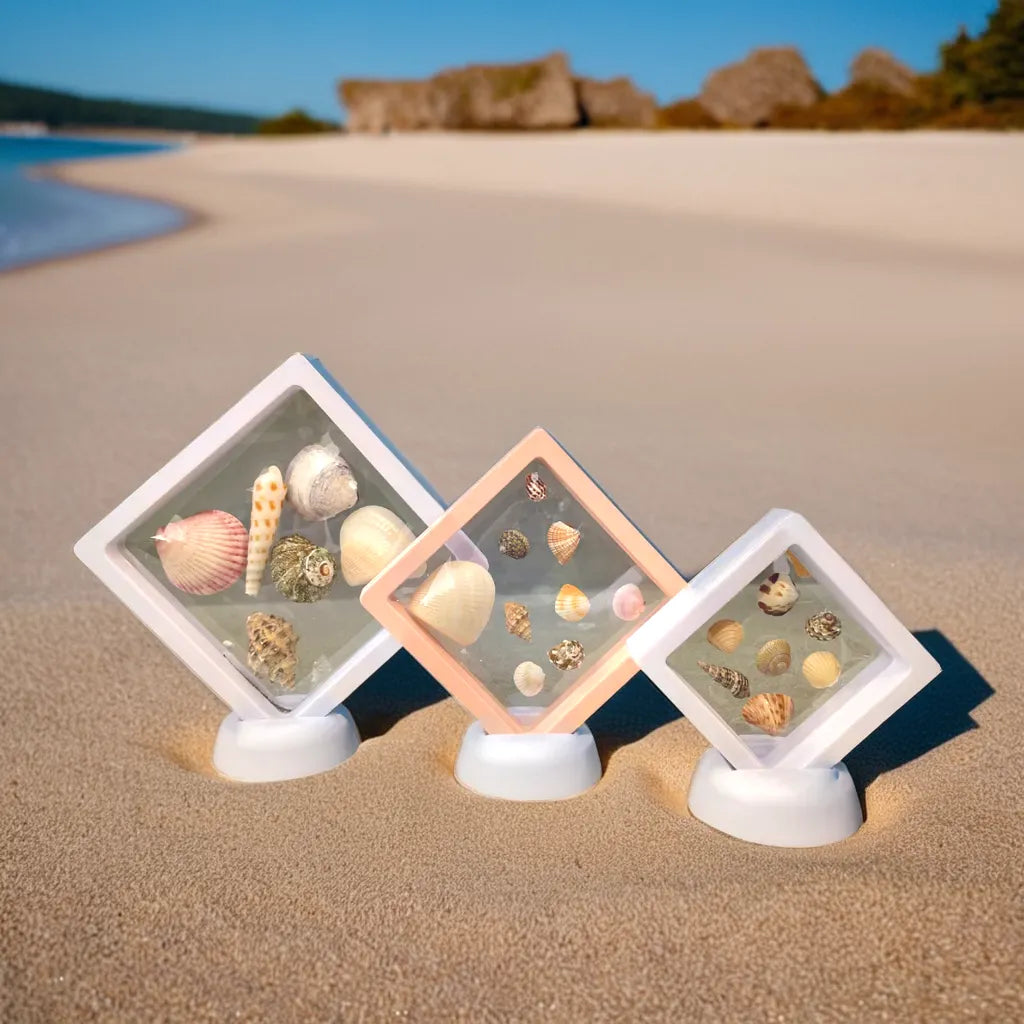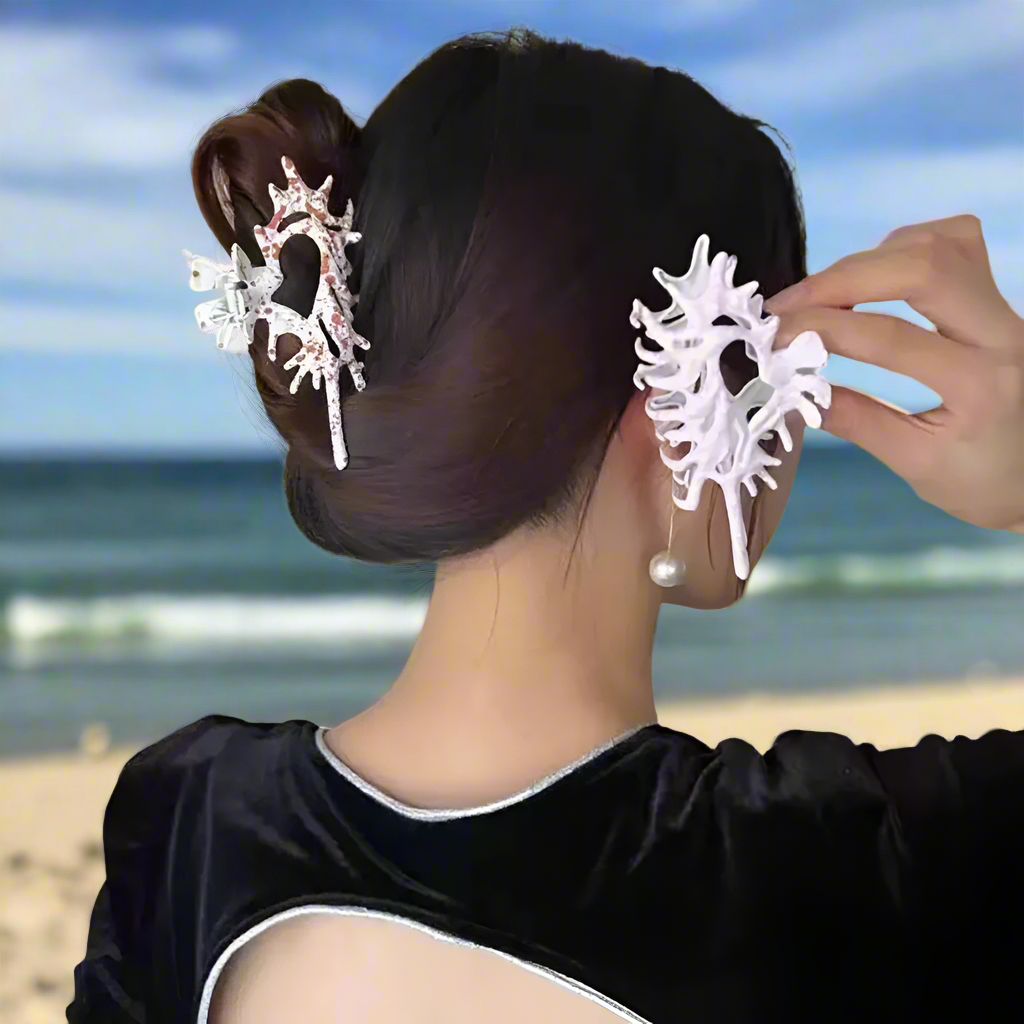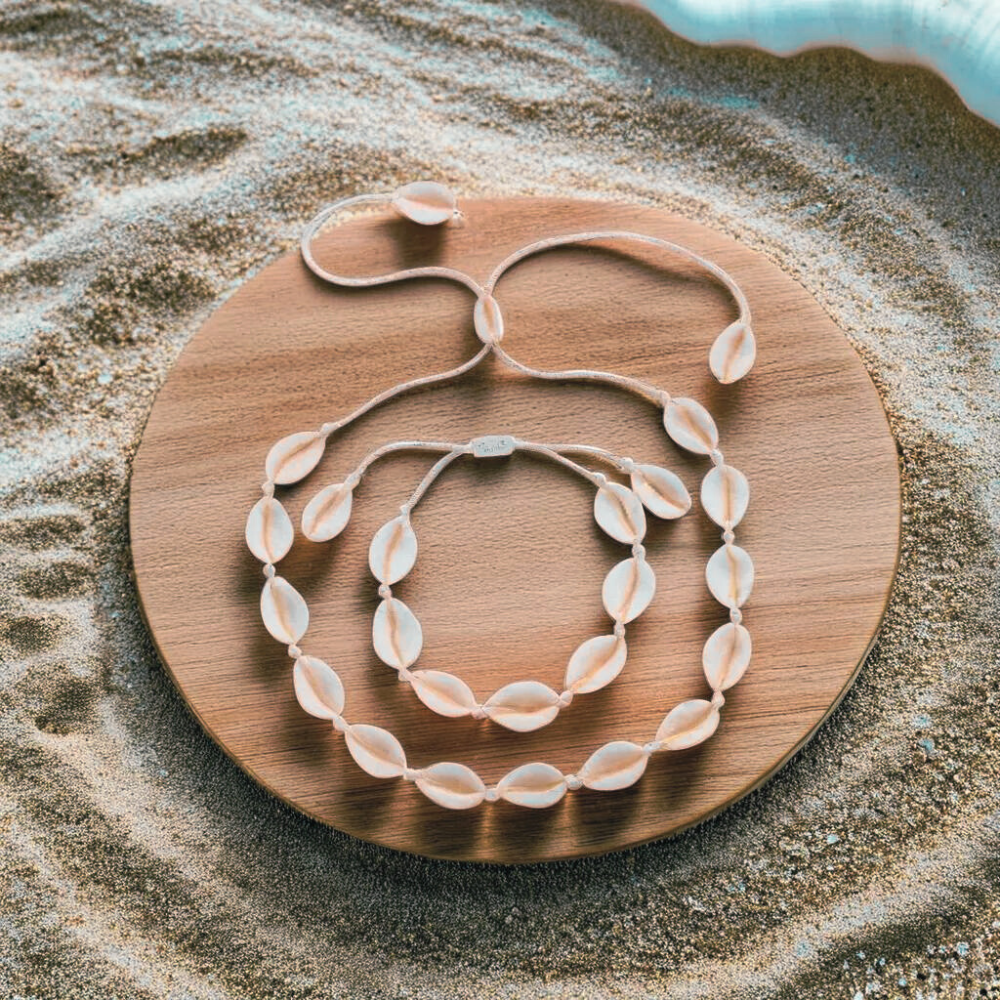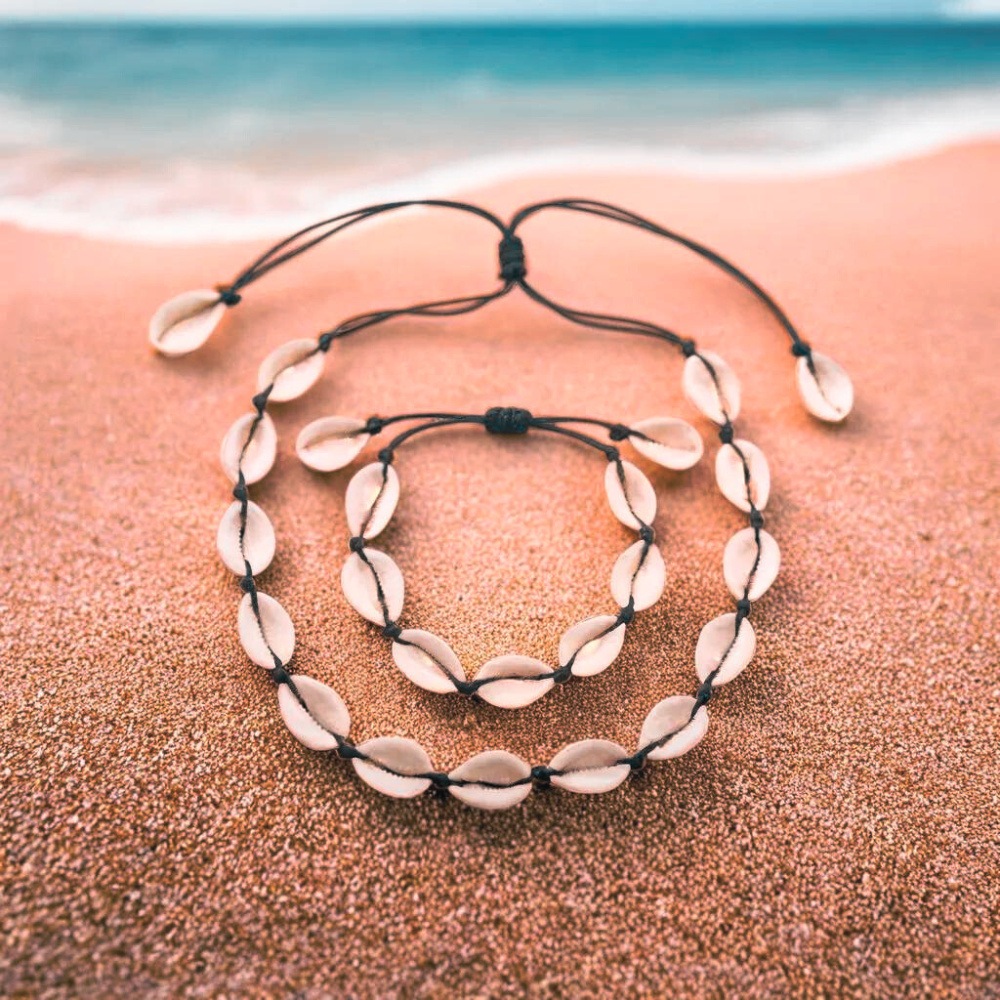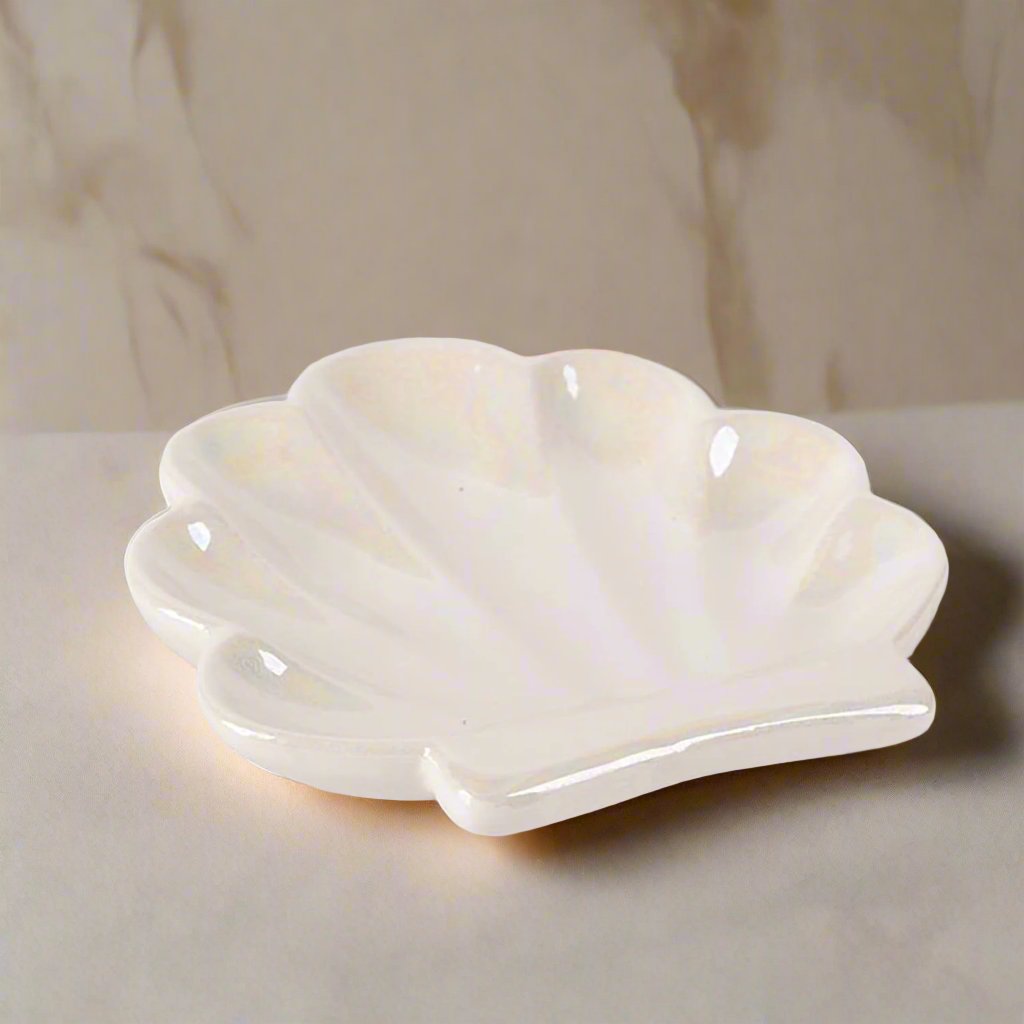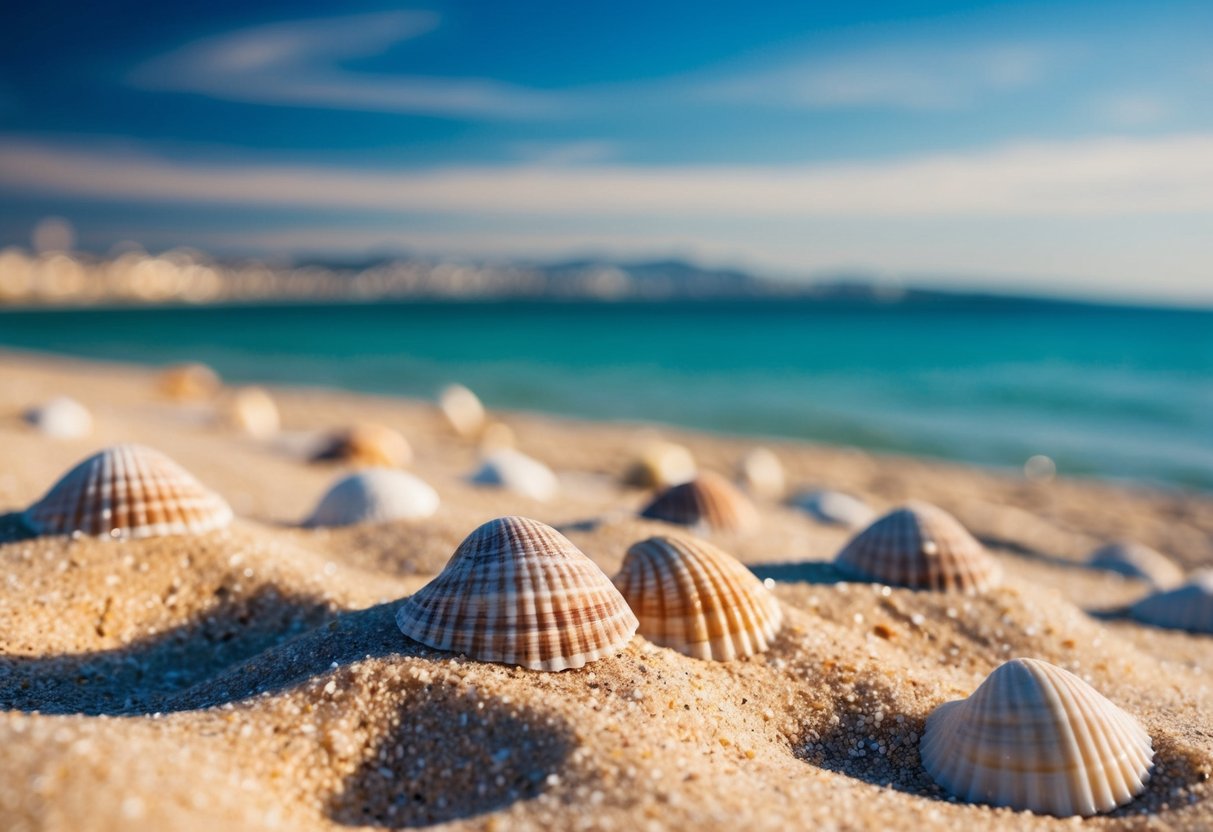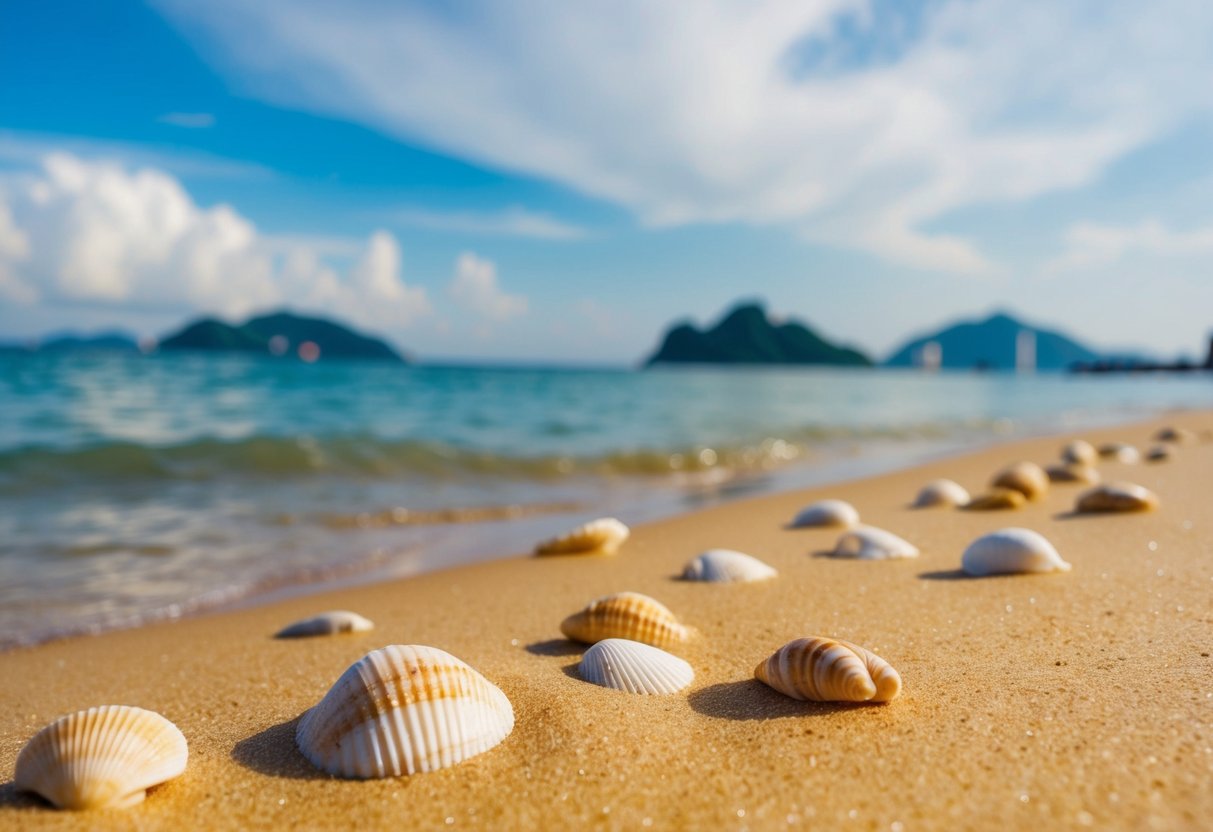Ecuador's coastline offers many beautiful beaches for shell collectors. From quiet coves to long stretches of sand, shell enthusiasts can find a variety of spots to search for treasures. The country's diverse marine life and habitats create ideal conditions for finding unique and colorful shells.
 Ecuador's beaches provide excellent shelling opportunities for both casual beachcombers and serious collectors. Some areas are known for specific types of shells, while others offer a mix of common and rare specimens. Exploring Ecuador's beaches can be a fun and rewarding experience for those interested in shells and marine life.
Ecuador's beaches provide excellent shelling opportunities for both casual beachcombers and serious collectors. Some areas are known for specific types of shells, while others offer a mix of common and rare specimens. Exploring Ecuador's beaches can be a fun and rewarding experience for those interested in shells and marine life.
 Ecuador's beaches provide excellent shelling opportunities for both casual beachcombers and serious collectors. Some areas are known for specific types of shells, while others offer a mix of common and rare specimens. Exploring Ecuador's beaches can be a fun and rewarding experience for those interested in shells and marine life.
Ecuador's beaches provide excellent shelling opportunities for both casual beachcombers and serious collectors. Some areas are known for specific types of shells, while others offer a mix of common and rare specimens. Exploring Ecuador's beaches can be a fun and rewarding experience for those interested in shells and marine life.
1) Ayangue Beach
Ayangue Beach is a hidden gem on Ecuador's coast. This U-shaped bay stretches for 3 kilometers, flanked by cliffs and lush vegetation. The beach is known for its calm waters, making it perfect for swimming and snorkeling. Visitors can explore the vibrant marine life just offshore. Ayangue's sheltered cove also makes it an excellent spot for shell collecting. Beachcombers can find a variety of shells along the shoreline. The small fishing village of Ayangue offers a taste of local culture. Visitors can sample fresh seafood at beachside restaurants. While less developed than some other Ecuadorian beaches, Ayangue is growing in popularity. It offers a mix of natural beauty and local charm. The beach is located about 42 kilometers from Santa Elena. It's a bit off the main highway, which has helped preserve its quiet atmosphere. For those interested in diving, Ayangue serves as a great base. Nearby dive sites offer opportunities to see colorful fish and coral reefs.2) Ballenita Beach
Ballenita Beach sits along Ecuador's coast, not far from the popular resort town of Salinas. Its name means "little whale" in Spanish. The beach has a mix of sand and rocky areas. During low tide, the northern part of Ballenita reveals interesting tide pools. These shallow pools form in the rocky shelf and trap small sea creatures. Visitors can explore and observe the marine life up close. While swimming may not be ideal due to rocks and strong waves, Ballenita offers other attractions. The beach's white sand provides a nice spot for relaxing or taking walks. Some parts of the shoreline resemble Mediterranean coastal areas. Ballenita Beach is part of Ecuador's Ruta del Spondylus (Spondylus Route). This coastal highway connects many beaches and towns. The area around Ballenita has a mix of natural beauty and developed areas. For shell collectors, Ballenita can offer some interesting finds. The rocky areas and changing tides may wash up various shells on the beach. However, it's always best to check local rules about collecting.3) Salango Beach
Salango Beach sits on Ecuador's central coast in Manabi province. This picturesque stretch of sand offers a peaceful setting for beachcombers and shell collectors. The waters near Salango Island, just offshore, create ideal conditions for shells to wash up on the beach. Visitors can find a variety of colorful and interesting shells along the shoreline. Salango's location provides protection from strong waves, making it easier to spot shells in the calm waters. The best time for shelling is often early morning after high tide has receded. Common shell types found here include cockles, scallops, and moon snails. Lucky searchers might also discover rarer finds like sand dollars or pieces of sea glass. The nearby fishing village of Salango adds local charm. Visitors can take boat trips to Salango Island to explore its beaches and waters for more shelling opportunities. Remember to only collect empty shells and leave live creatures in their natural habitat. Salango Beach offers a rewarding experience for shell enthusiasts in a beautiful coastal setting.4) Playa Rosada
Playa Rosada is a hidden gem on Ecuador's coast. Its name means "Pink Beach" in English, referring to its unique pinkish-peach sand. The beach is located between Ayangue and Palmar in Santa Elena province. Visitors can find Playa Rosada at kilometer 37 of the Spondylus Route. A marked detour leads to this secluded spot. The entrance now features corporate letters spelling out "Playa Rosada" for easy identification. This beach offers a tranquil setting for shell collectors. Its unspoiled nature makes it an ideal place to search for unique shells. The pink sand provides a beautiful backdrop for beachcombing activities. Playa Rosada is usually not crowded, especially outside the high season of January to April. This quiet atmosphere allows for peaceful shell hunting experiences. Visitors should note that there are no restaurants nearby, so bringing snacks is advisable. The beach's natural habitat remains largely untouched. This pristine environment may contribute to the presence of diverse shells. Shell enthusiasts can explore the shoreline while enjoying the serene surroundings of Playa Rosada.5) Los Frailes Beach
Los Frailes Beach is often called the most beautiful beach in Ecuador. It sits inside Machalilla National Park on the country's coast. The beach is known for its soft white sand and clear blue waters. Visitors can enjoy swimming, sunbathing, and taking in the stunning views. Los Frailes Beach is about 10 km north of Puerto Lopez. Tourists can take a bus or hire a tuk-tuk to get there from nearby towns. The beach is part of a protected area, so it stays clean and unspoiled. This makes it a great spot for nature lovers and those seeking a peaceful day by the sea. There's a hiking trail near the beach that offers amazing views of the coastline. The hike is about 4.7 kilometers long and takes 1 to 2 hours to complete. While Los Frailes isn't known as a top shelling beach, its natural beauty and calm waters make it a must-visit spot for beach lovers in Ecuador.6) Playa Montañita
Playa Montañita is a vibrant beach town on Ecuador's coast. It's known for its great waves and surfing culture. The beach offers golden sand and clear waters. Surfers flock here year-round to catch the impressive swells. Montañita has a lively atmosphere, especially at night. The town comes alive with music and beachside parties. During the day, visitors can enjoy the sun and sand. Swimming, sunbathing, and beach walks are popular activities. The beach is lined with small shops and restaurants. Many offer fresh seafood and local dishes. For a quieter experience, early mornings are ideal for shell hunting. The beach is less crowded then. While not primarily known for shelling, patient beachcombers can find some treasures. Small shells and sea glass sometimes wash up on shore. Montañita also offers other activities like Spanish lessons and paragliding. These provide a break from beach time.7) Playa de Olón
Playa de Olón stretches for about 4.34 miles along Ecuador's coast. This long beach offers plenty of space for visitors to spread out and enjoy the sand. Olón is known for its peaceful atmosphere, making it ideal for families and those seeking a quiet getaway. The beach is rarely crowded, allowing for a relaxed experience. Visitors can rent umbrellas and chairs to make their stay more comfortable. The calm waters are good for swimming and beginner surfing. Several beachfront restaurants serve tasty local food. Seafood is a popular choice at these eateries. Olón's location near Montañita gives visitors access to more lively entertainment if desired. The contrast between the two areas provides options for different moods. The beach is clean and well-maintained. Its natural beauty attracts both locals and tourists looking to enjoy Ecuador's coastline. For those interested in water activities, Olón offers options like sport fishing and water skiing. The long shoreline is also perfect for beach walks and jogging.8) Playa de Same
Playa de Same sits on Ecuador's northern coast in Esmeraldas province. This long stretch of golden sand offers excellent shelling opportunities for beachcombers. The beach extends for several kilometers, giving shell hunters plenty of area to explore. Visitors can find a variety of shells washed up on the shore, especially after storms. Common finds include colorful scallop shells, delicate sand dollars, and spiral conch shells. Patient searchers may also uncover rarer specimens like cowries or nautilus shells. The best time for shelling is during low tide in the early morning. This exposes more of the beach and increases the chances of finding intact shells before other collectors. Playa de Same's calm waters and gentle waves make it safe for wading while looking for shells. The beach also provides scenic views of the Pacific Ocean and surrounding palm trees. After shelling, visitors can relax at nearby resorts or sample fresh seafood at local restaurants. The area offers a peaceful setting for enjoying Ecuador's coastal beauty.9) Playa de Manta
Playa de Manta is a popular beach located in the city of Manta, Ecuador. It offers visitors a mix of urban amenities and natural beauty along the Pacific coast. The beach stretches for several kilometers, providing ample space for sunbathing and beach activities. Its golden sand and clear waters make it an attractive spot for swimming and water sports. Playa de Manta is known for its lively atmosphere. Beachgoers can find a variety of restaurants and bars along the shore, serving fresh seafood and local specialties. For shell collectors, Playa de Manta can be a rewarding destination. The beach often has a variety of seashells washed up on its shores, especially after storms or high tides. Visitors should be aware that the beach can get crowded, especially on weekends and holidays. The best time for shelling is usually early in the morning when fewer people are around. While not as secluded as some other Ecuadorian beaches, Playa de Manta offers a unique blend of city life and coastal relaxation. It's a good choice for those who enjoy urban beaches with easy access to amenities.10) Boca de Briceno
Boca de Briceno is a hidden gem on Ecuador's coast. This small beach town offers a peaceful escape for shell collectors and nature lovers. The beach stretches for several kilometers, providing ample space for beachcombers. Its sandy shores are often dotted with a variety of seashells, washed up by the Pacific Ocean. Visitors can find colorful scallop shells, delicate sand dollars, and sometimes even larger conch shells. The best time for shelling is early morning, after the tide has receded. Boca de Briceno's calm waters make it ideal for swimming and paddling. The area is also known for its seafood restaurants, where tourists can enjoy fresh catches of the day. Nearby attractions include mangrove forests and small fishing villages. These offer opportunities to explore local culture and ecosystems. While less developed than some other Ecuadorian beaches, Boca de Briceno charms visitors with its unspoiled beauty and tranquil atmosphere.Why Ecuador is Ideal for Shelling
Ecuador's coastline offers prime conditions for shell collectors. Its unique geography and climate create an environment where diverse shells can be found year-round.Diverse Coastal Ecosystem
Ecuador's coast spans over 2,200 kilometers, with varied habitats. Rocky shores, sandy beaches, and mangrove swamps each host different shell species. The Humboldt Current brings cold, nutrient-rich waters, supporting a wide range of marine life. Popular shelling spots include:- Salinas Beach: Known for sand dollars and sea urchin shells
- Canoa Beach: Offers a variety of clam and scallop shells
- Playa Los Frailes: Home to rare cowrie shells

